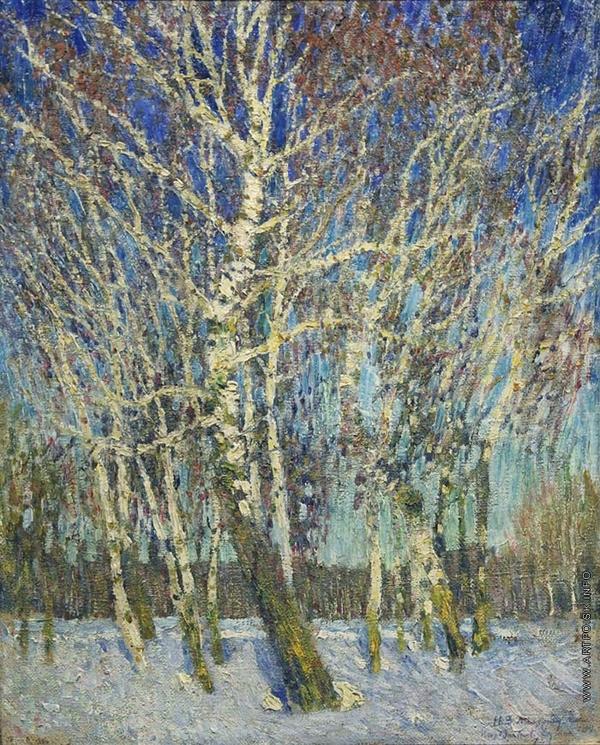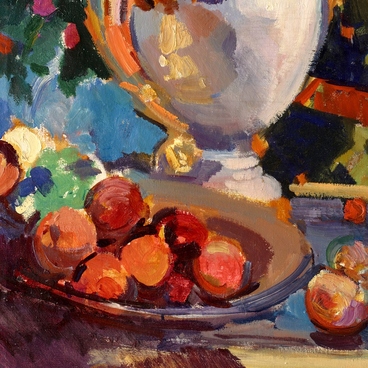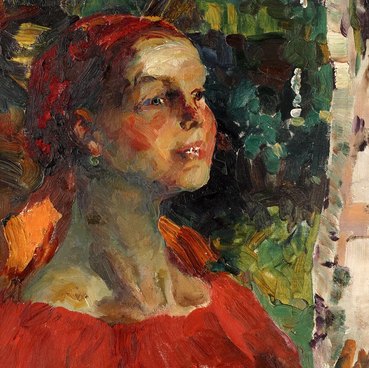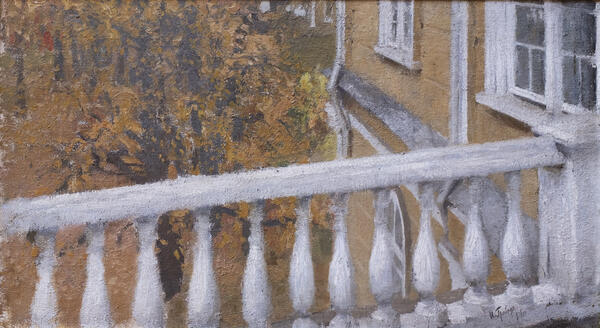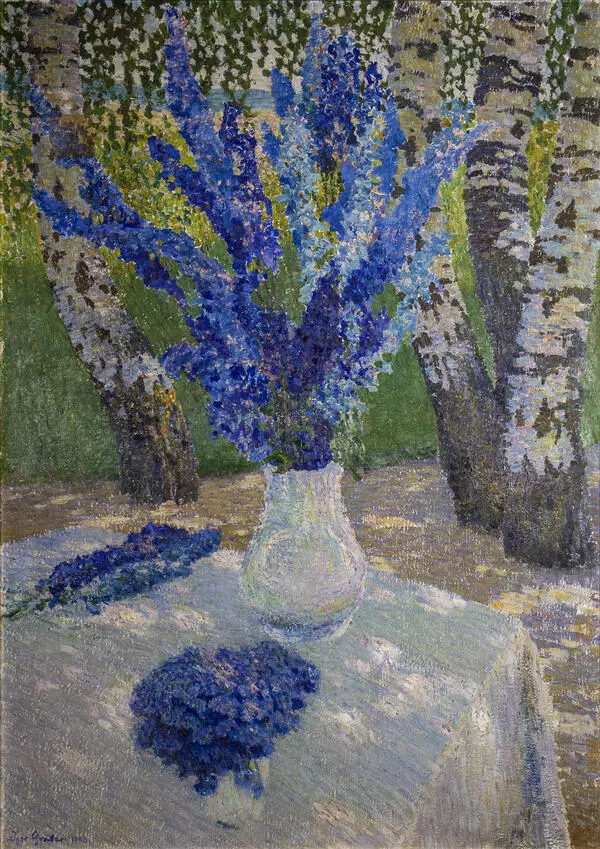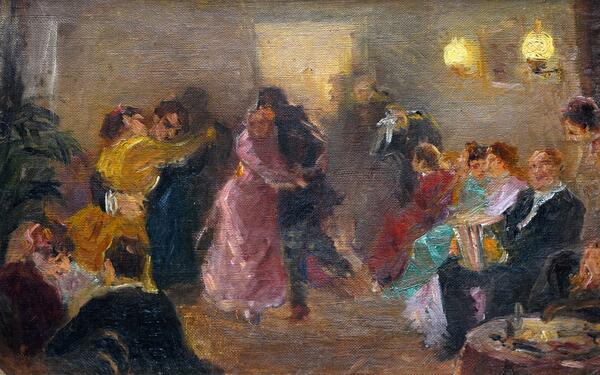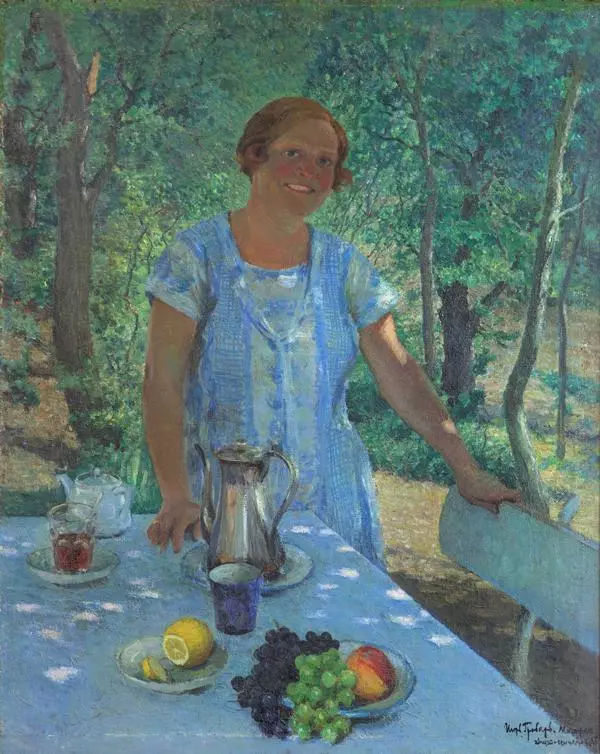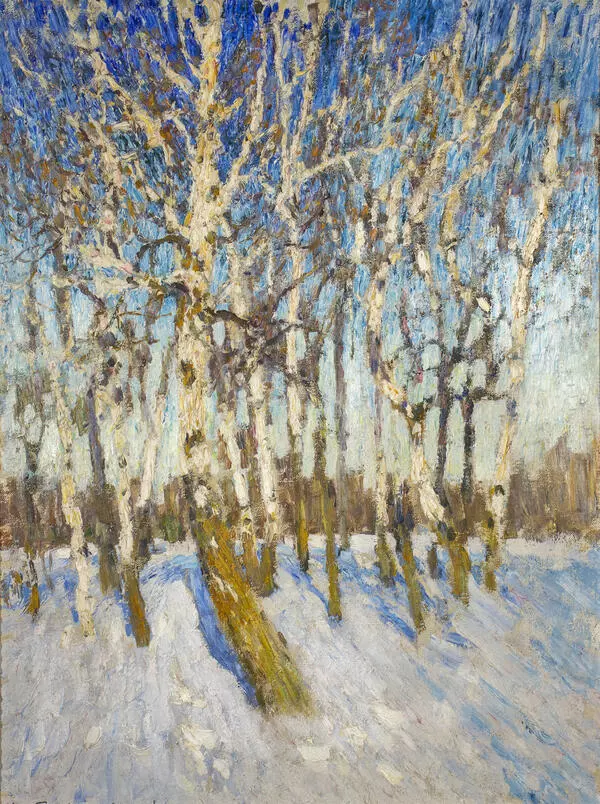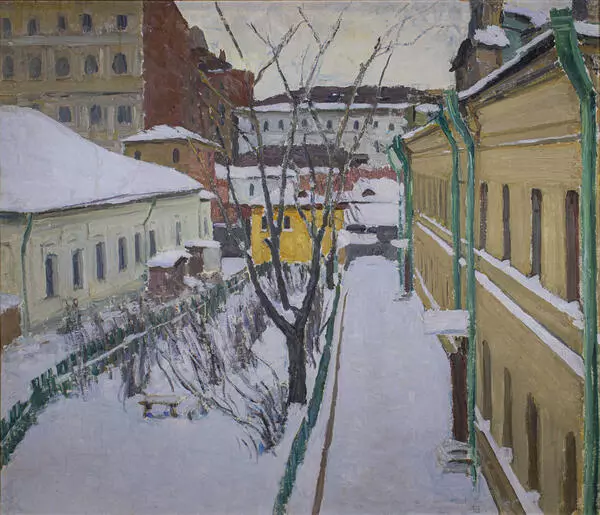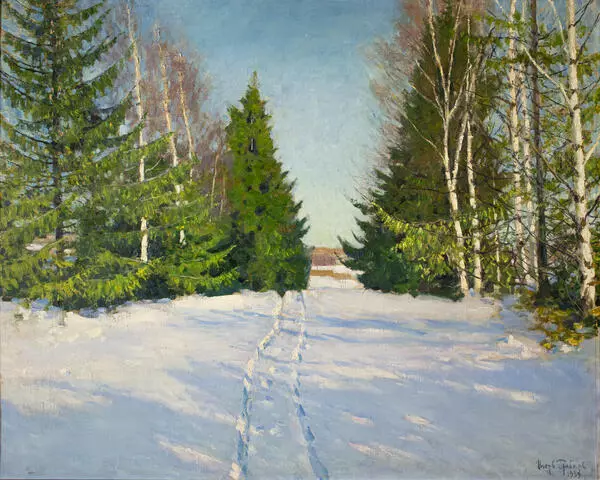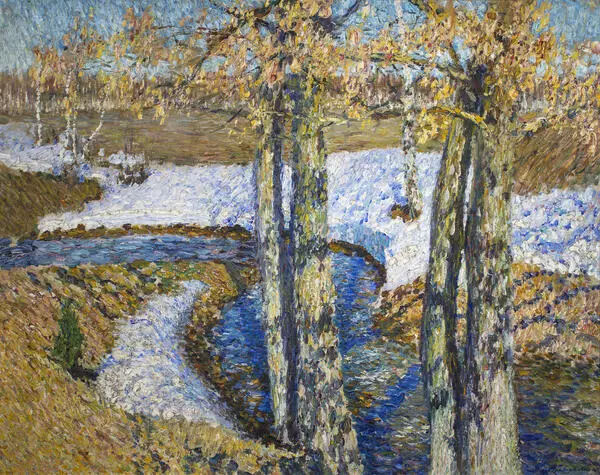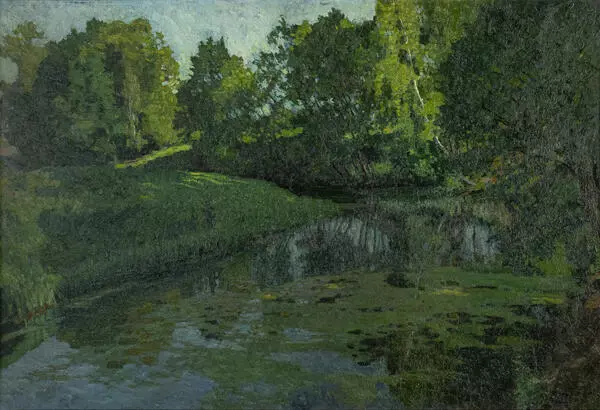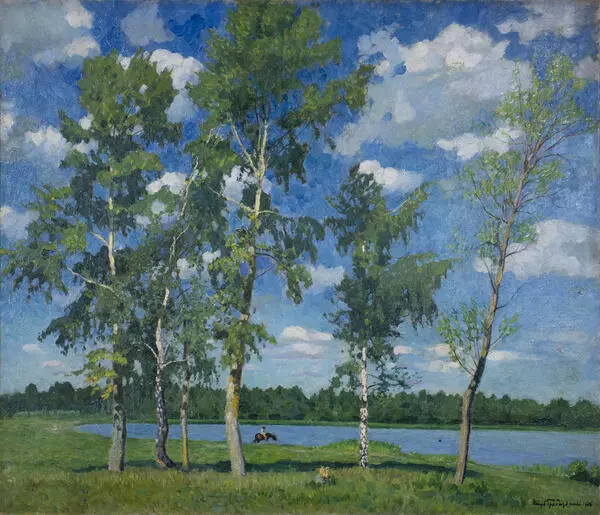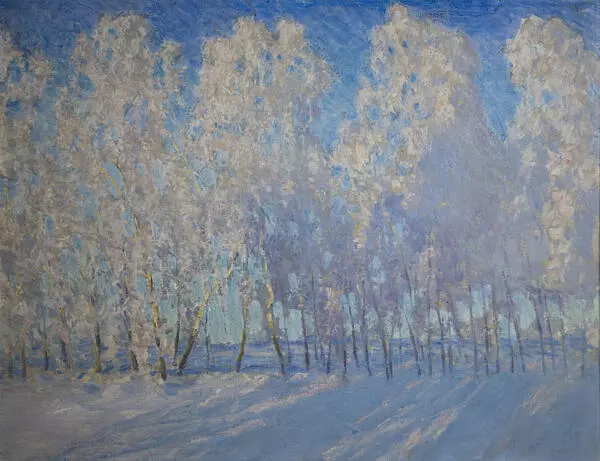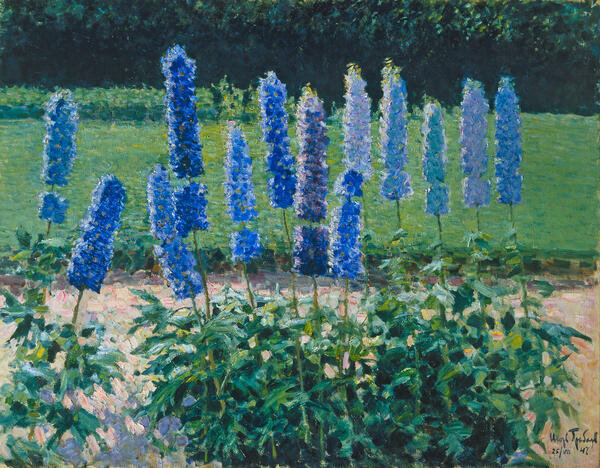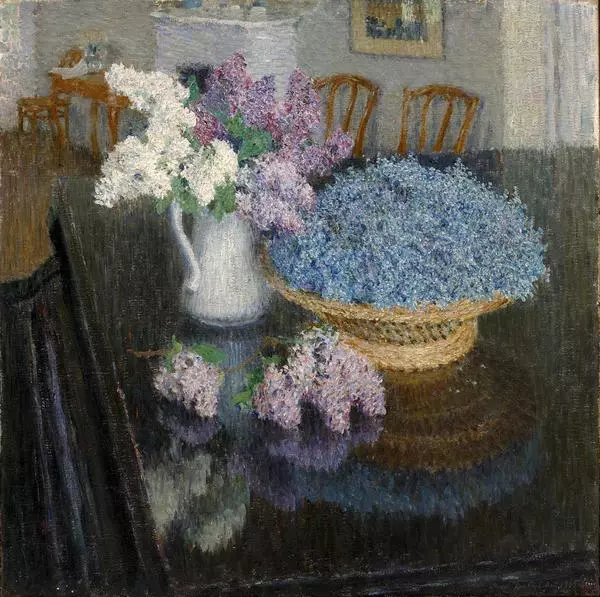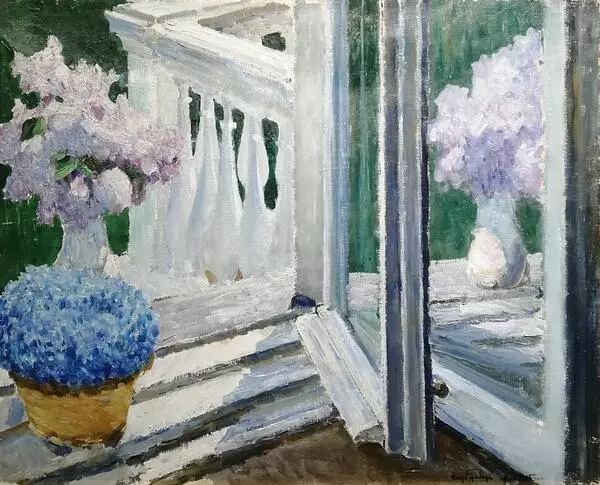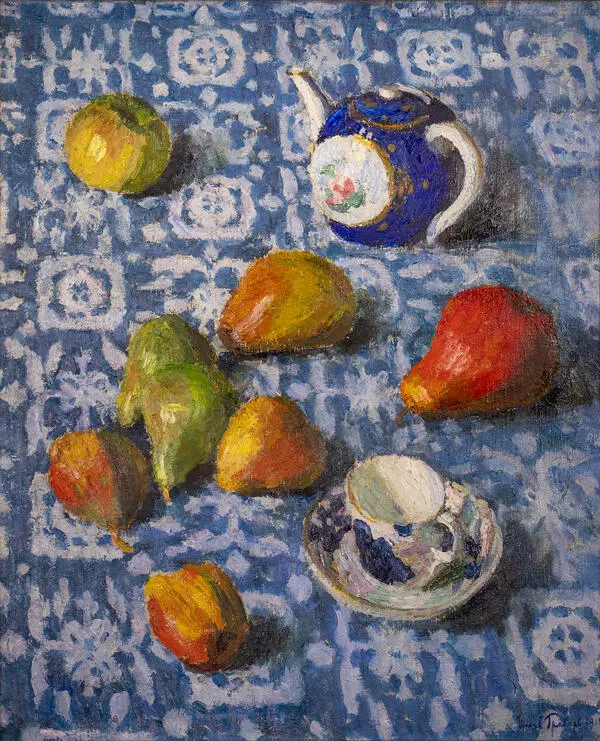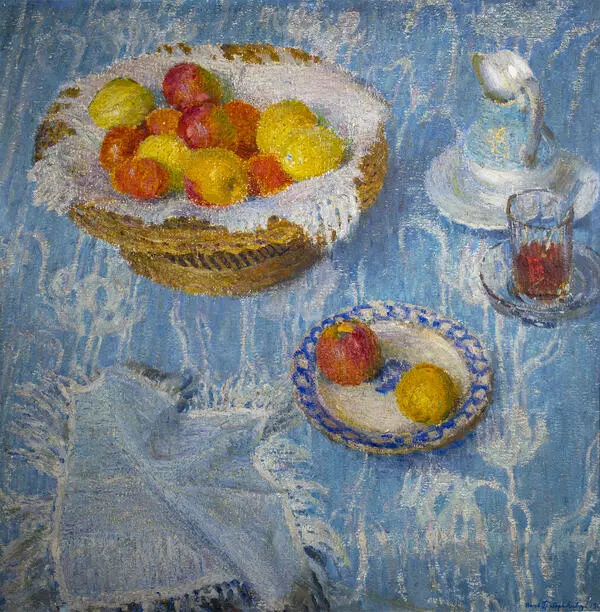Igor Grabar painted The Frost in 1906. This is not the only work with this title created by the artist, he kept repeating this theme in 1905-1908. He said that all that play of colors in the small crystals caused some painter’s excitement in him:
#1
Igor Grabar
The Frost
#3
“There are very few so stunningly colorful polyphonic matters in the world that can compare to a sunny day in the frost, with the color scheme changing every minute and taking the most fantastic shades, for which one has no paints on the palette”.
#2
Grabar painted the frost on dull and sunny days, in mornings and evenings. He mostly did small colorful sketches, as the paint froze up quickly in the cold air. In this painting, the artist put the ground coat, which is normally concealed from the viewer, to the forefront, as he used its texture and the white color for the snow and the downy branches of the birch trees.
#5
February Azure, 1904. Source: wikipedia.org
The artist loved working on landscape paintings in the winter, and in the summer he usually painted still life. As soon as the snow started to fall, he would spend weeks in the open air. He even dug a trench in the snow for one of his most celebrated paintings February Azure, which fit him and a large easel. From that perspective, he depicted the full variety of the blue tones, from light green to ultramarine.
#6
“I was standing next to a delightful specimen of a birch tree, uncommon in terms of the rhythmic composition of its branches. I got lost in admiration, and I dropped my cane and bent down to pick it up. When I looked up at the top of the birch tree from below, from the surface of the snow, I lost my mind as the view was fantastically beautiful: some repercussions and resonations of all the rainbow dyes brought together with the blue enamel of the sky”,
— the master artist explained.
#7
Later on, he used the trench method again as he worked on his other painting: he used this perspective to emphasize the height of the sky with the low horizon.
Art experts classify the works of the artist of that period as impressionism: the author strived to convey the impression of a moment in his paintings. However, Grabar did not copy the techniques used by the French masters, he had his unique approach to painting, According to his biographer Natalia Mamontova, the artist aspired to develop a formula of color and light vision. Art experts classify the works of the artist of that period as impressionism: the author strived to convey the impression of a moment in his paintings. However, Grabar did not copy the techniques used by the French masters, he had his unique approach to painting, According to his biographer Natalia Mamontova, the artist aspired to develop a formula of color and light vision.
#9
Besides painting, Igor Grabar was a fine art expert, worked as the director of the Tretyakov Gallery, and managed the Central Restoration Workshops. It is thanks to him that many monuments of ancient Russian art of the 11th-14th centuries were rescued from destruction. The artist was a very busy person, still he tried to find the time for what he loved the most.
#12
In his automonograph, he wrote:
“Painting has always been my main passion, without painting I would feel like a fish in the sand”.
#13
Yaroslavl Museum of Fine Arts
читать дальшескрыть
00:00
00:00
1x
The Frost
Время создания
1906
Размер
122,4x160,3 cm
Техника
Oil on canvas
Коллекция
66
Открыть в приложении
Поделиться


